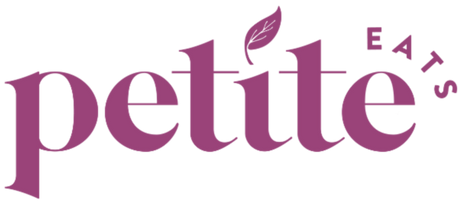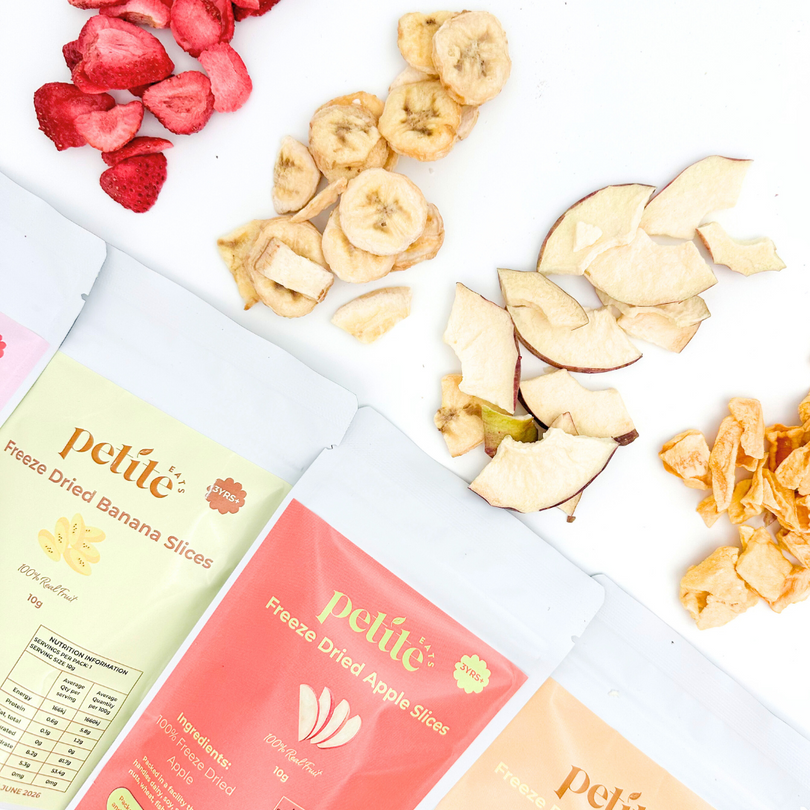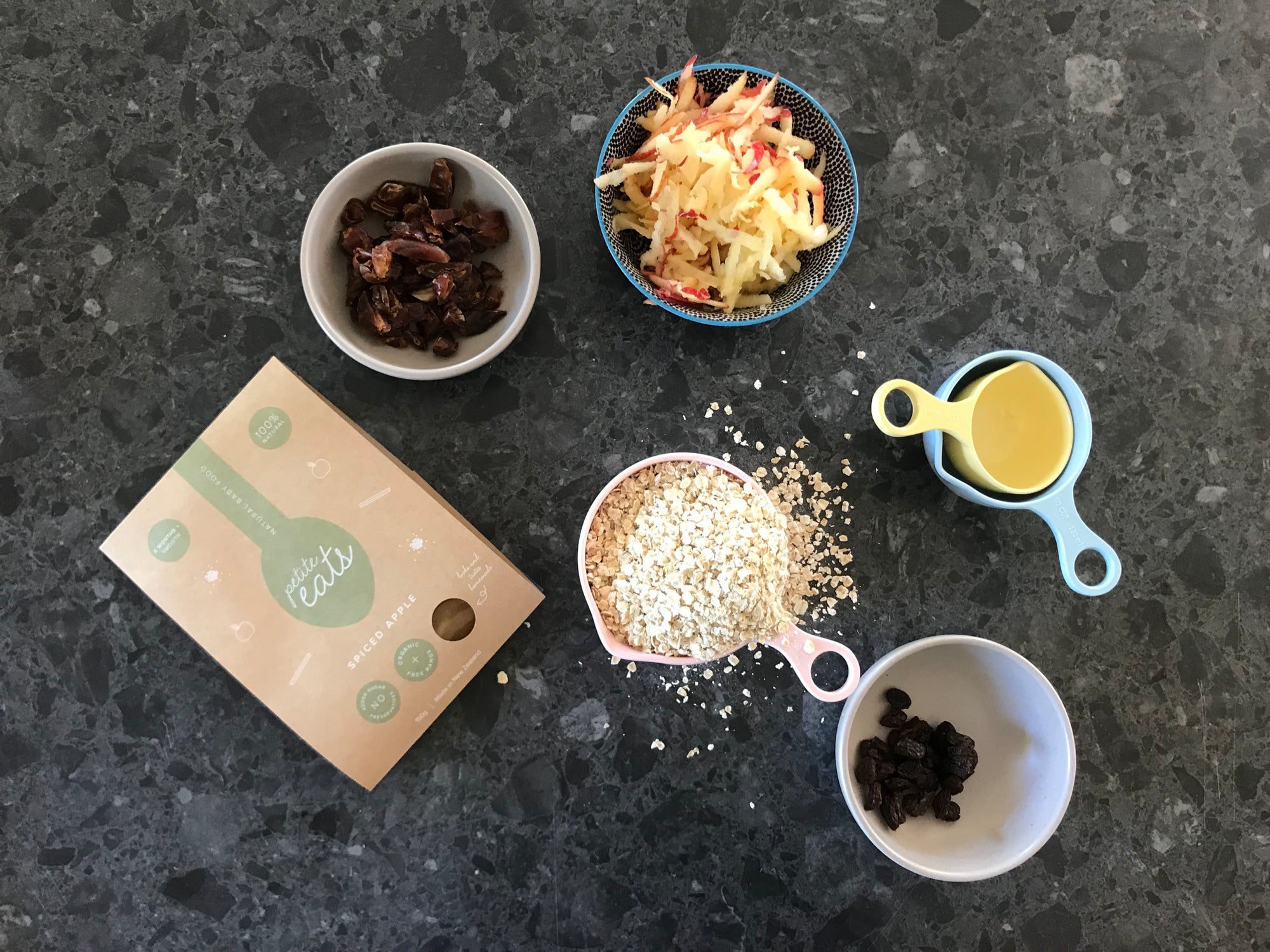A question we get asked a lot is...
'What makes Petite Eats different from the pouches at the supermarket?'
This is a valid question and we have all the answers for you.
1. Fruit in savoury pouches
2. Percentage of ingredients
3. Fillers
4. Meat percentage
5. Packaging
When we first started our son on solids I made all his food from scratch which I loved doing. Once he needed outings most days, I realised I needed a more convenient option for when we were on the go. I investigated the supermarket aisle very closely and I was shocked at what I discovered.

1. Fruit in savoury pouches: I found it almost impossible to find a pouch that didn't have fruit added or as the main ingredient. I personally did not want to have fruit in savoury purees for a few reasons:
-fruit masks flavours; if you are masking the REAL flavour of vegetables your baby is less likely to accept them as they get older. Studies have shown that babies have a natural tendency to like sweet foods as breast milk and formula is sweet so they need to be 'trained' to like bitter flavours.
-fruit is high in sugar; this one explains itself really
Petite Eats does not add fruit to savoury pouches!
2. Percentage of ingredients: When you look closely at the ingredients panel at the back of the pack you will find all the ingredients listed however you will only find the percentage of the ingredients if they are in the main title of the dish. Some pouches only account for as little as 25% of their ingredients.
Petite Eats lists all the ingredients and gives the percentages of every single one so you know exactly what's in your babies food.
3. Fillers: The most common of these are ground rice and tomato paste. While there isn't anything damaging in either of these ingredients, they offer very little in terms of nutrition for your baby. Tomato paste also is high in sugar and can mask flavours. These fillers take the place of more nutritious ingredients that could be packed in those pouches.
Petite Eats does not use fillers as we believe in packing in as much nutrients and flavours as possible. We also don't want to mask natural flavours.
4. Meat percentage: Supermarket pouches offer between 8-9% meat in an average 110g pouch.
Petite Eats uses 20% meat in a generous 150g serve meaning there is much more protein for your bub and more value for money in each pouch.
5. Packaging: The packaging of most pouches are foil lined and have spouts that baby can suck out of. While these are 'convenient' they don't allow your baby to see what they are eating and to explore their food. Can you imagine sucking your lunch through a straw without seeing what's inside? So why let you baby? We believe babies should be engaging most of their senses when they eat not just taste.
Petite Eats uses a clear pouch so you and your baby can see their food. We offer a biodegradable spoon with every pouch for numerous reasons, for example; engaging the senses and encouraging fine motor skills. Recent studies are showing that sucking instead of using a spoon can impair developing speech. More information about this is on our Spoon vs Pouch blog.
Our purees are more expensive but with good reason. We have at least double the amount of meat with a very generous serving size of 150g. Without the use of fillers we are packing our pouches full to the brim of nutritional goodness and our purees are made in small batches ensuring quality. I even hand pack every single packaging sleeve myself.
Xx



